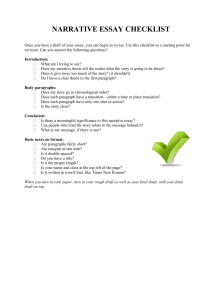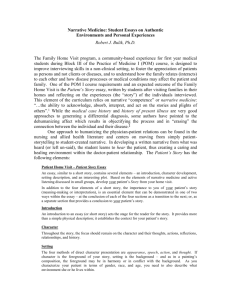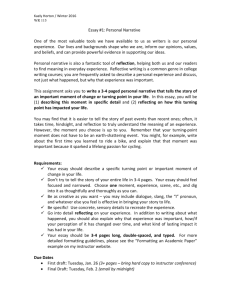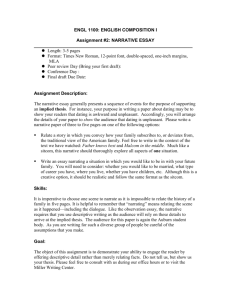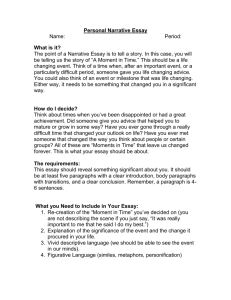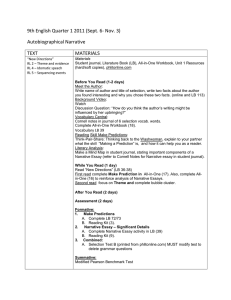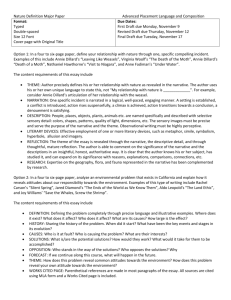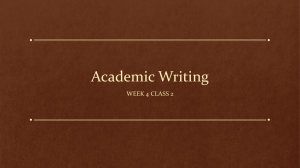Lesson/Unit Planning Process, Dr. Kevin Brady
advertisement
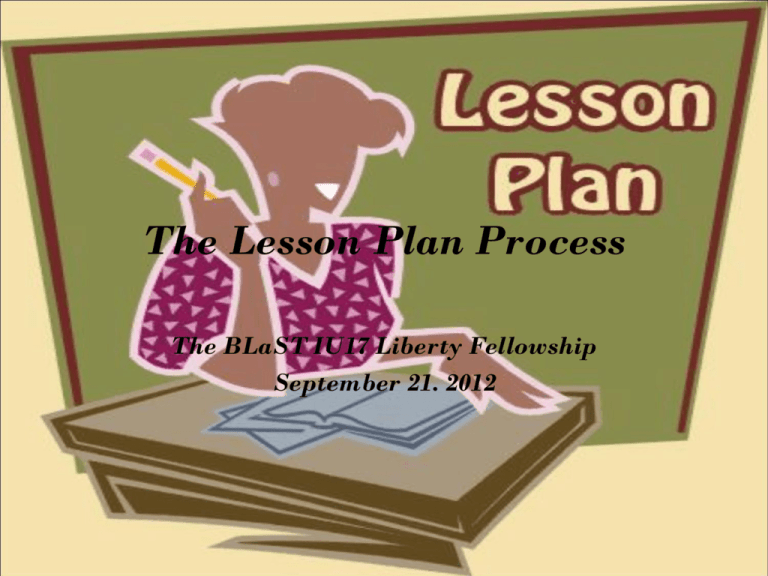
The Lesson Plan Process The BLaST IU17 Liberty Fellowship September 21. 2012 What is the purpose of the lesson plan? • The lesson plan: – Provides a format for teachers to demonstrate the integration of the content and strategies into their classroom practice (application objective). – Provides classroom resources for non-participating teachers to access the content and resources of the grant (dissemination and replication objective). – Fulfils the requirements for graduate credit from either Ashland (education) or Southern Oregon (history). What are the steps in lesson plan process? • Teachers work in teams of two to select a content focus from the timeframe for the year. • Using the CICERO website and other research materials, teams write an historical narrative or background essay on the selected time period. • Teams develop a grade level appropriate lesson plan that focuses on an aspect of the content. • Teams submit the lesson plan to the Project Director for review. • Each member of the team teaches the lesson. • Teams review and discuss the lesson. • Teams complete the lesson reflection form. • Teams review and discuss the feedback and make adjustments to the lesson. • Teams share their research and lesson with their colleagues on the school or district level. • Teams share their experience with their colleagues at the next TAH colloquium for feedback. • Teams make revisions to the narrative and lesson using the templates on their grant website and publish the lesson on that website. • The following year teams revisit the lesson and make additional refinements. What is the lesson format? • All lesson plans should include the following components: – – – – – – – – – An Essential Question The Pennsylvania State Standards addressed in the lesson Lesson Objectives Vocabulary/ Key Terms Historical Background Procedures and Activities Strategies for Differentiation Assessment (Formative and Summative) Materials and Resources What is the Historical Content Narrative? • The historical content narrative or background essay reflects your research on the content focus of your choice. • The narrative or essay provides the context for your lesson and the background for colleagues who might use the lesson in their classrooms. • The research should reflect multiple sources and different interpretations of the historical period. • This background is essential so that teachers – have a clear and detailed understanding of the topic – can teach it effectively, and – respond to student questions. • The narrative or essay must include the Binary Paideia for the time period. What are the steps in developing the lesson plan? • “Begin with the end in mind” or the Understanding by Design model – Identify desired results (the objectives) – Determine acceptable evidence (the assessment) – Plan learning experiences and instruction (the activities) Identify the lesson objectives • Develop the objectives or outcomes for the lesson. – Ask: What will students know (the content) and be able to do (the skills) as a result of this lesson? • Objectives should be measurable or observable and reflect both content and skill. – For example, it’s hard to assess whether students “appreciate” something, but you can assess how well a student can explain, describe, etc. • Objectives are not a description of the methods and activities that will be used in the lesson. Bloom’s Taxonomy • Content and skill acquisition objectives should utilize the language of one or more of the six levels of Bloom’s Taxonomy. – – – – Remembering (define, describe, identify) Understanding (discuss, explain, interpret) Applying (demonstrate, determine, chart) Analyzing (analyze, compare/contrast, differentiate) – Evaluating (defend, interpret, argue) – Creating (synthesize, organize, create) Determine the Assessment • Assessment is connected to the objectives of the lesson. – The objectives are what students will know and be able to do, the assessment is how they will show or demonstrate what they know and are able to do. • Planning the assessment after the objectives and before the activities: – creates a direct connection between the lesson objectives and how they will be assessed. – helps to identify the activities that will support students in meeting the lesson objectives. – keeps the lesson focused. Plan the Activities • The activities should: – move students toward meeting the lesson objectives. – scaffold or build upon each other. – be differentiated to meet the diverse needs/learning styles of the students. • All of the activities should all relate to the objectives of the lesson. – If an activity doesn’t tie into an objective, ask why are we doing it? – If there’s a good reason, add an objective that the activity supports. – If there is no reason, drop the activity. • Let’s look at the documents you will need to complete: – Historical Narrative or Background Essay – Lesson Plan Template – Lesson Reflection Form • Let’s look at the timeline for the process. Please share your: -Thoughts -Questions -Concerns

